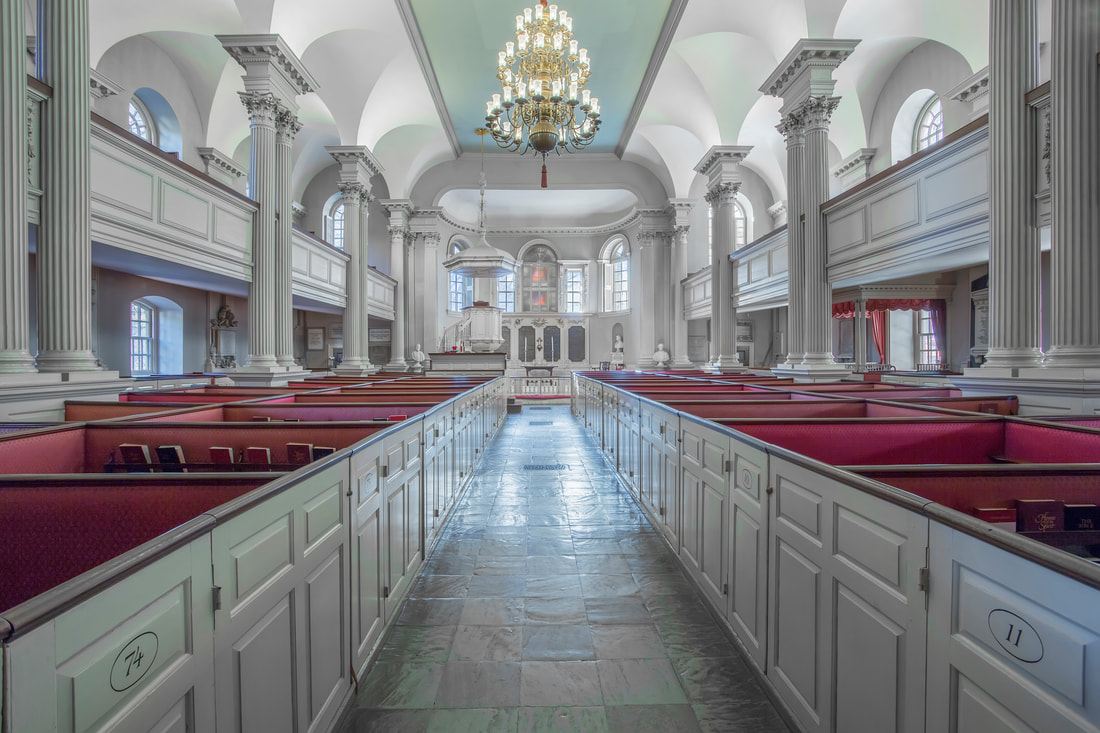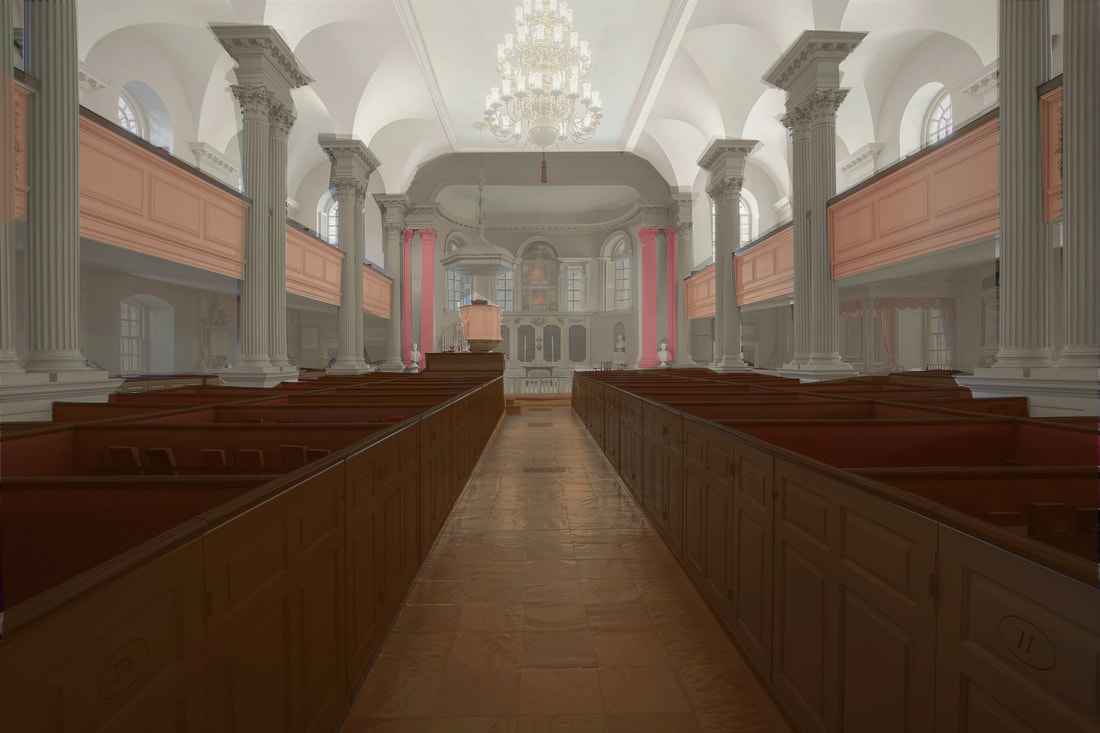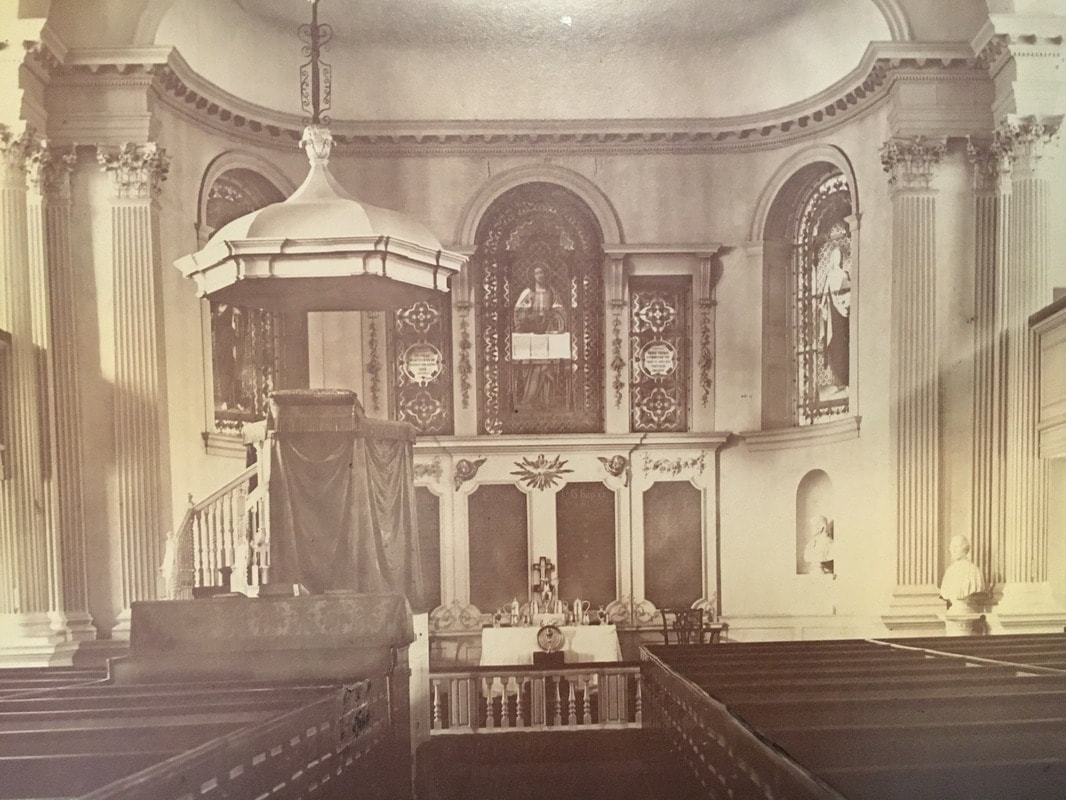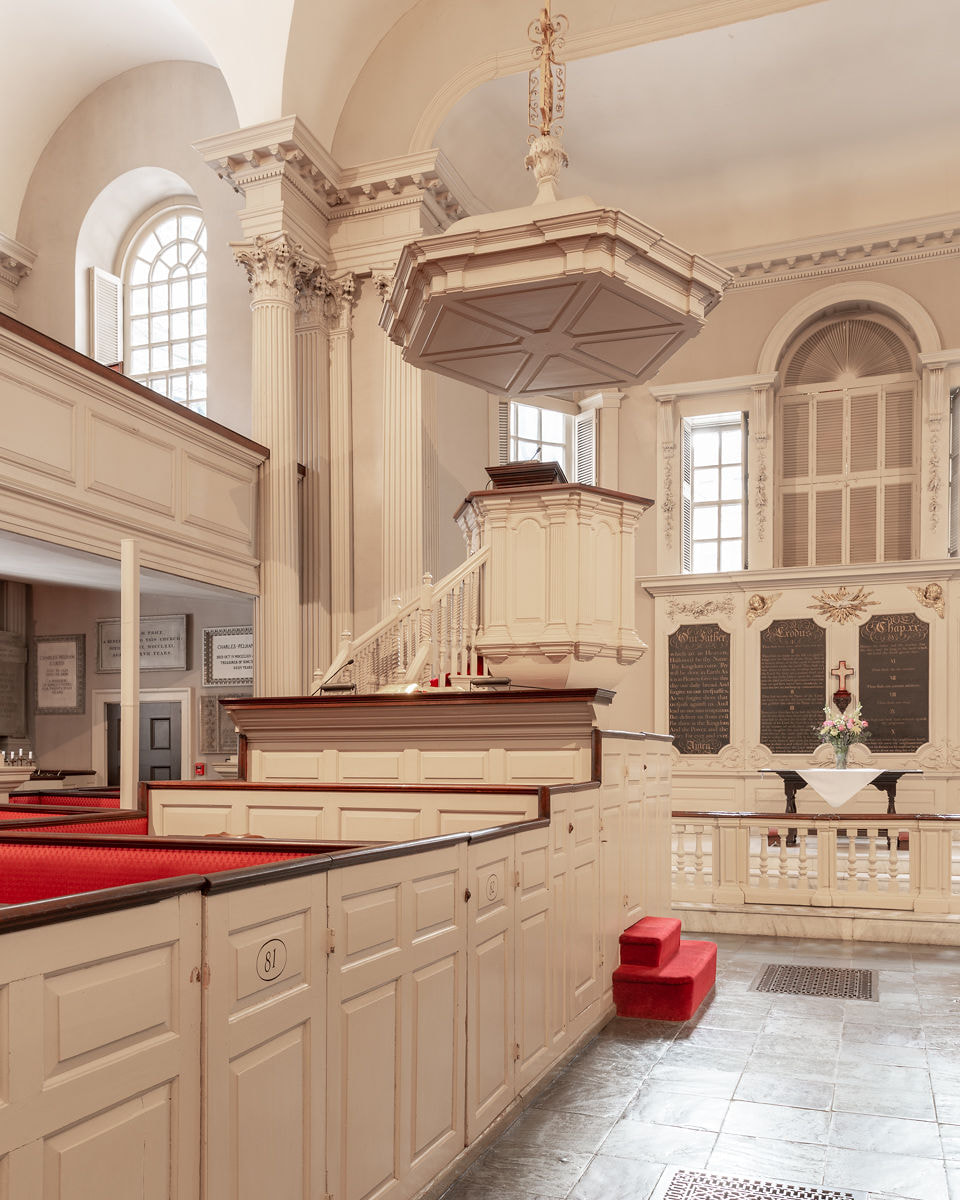KING'S CHAPEL
|
|
The 1754 structure of the Stone Chapel has changed relatively little in the past 266 years. While the physical building has remained largely the same, this only serves to emphasize the changes in the building’s interior color scheme over time. While it may seem like a minor change, the different paint colors that have been introduced into King’s Chapel throughout the centuries have significantly changed the tone and character of the space. There are three distinct phases of interior decoration, each one a reflection of the tastes and desires of its contemporary community.
Harrison designed the Sanctuary to be bright and filled with light, an atmosphere that would have enabled worshipers to follow along in their praye rbooks. Contrary to many popular depictions of colonial spaces, the 18th century was full of colorful interiors. Having begun to excavate the city of Pompeii from the volcanic ash in 1738, the English delighted in the mix of colors they saw in the preserved Roman rooms. Throughout the late-1700s, warm, earthy tones became popular in decorating. Color was used sparingly to highlight architectural details and bring depth to the space. The double columns that span the height of the two-story Sanctuary were painted in ombré gray to create the illusion of greater height. Trompe l'oeil, a form of artistic illusion, was created by painting pilasters (flattened columns that sit along the walls) in a pink faux-marble, making them pop against the pale background. The upper levels of the building were given light pastel shades — pale grey walls, peach gallery fronts and pulpit — to offset the dark wood flooring and unfinished pews of the ground floor. This Georgian color scheme was maintained for nearly a hundred years. Throughout the 19th century, American architects were inspired by a wide variety of historic periods; late-medieval style was one of the most popular approaches to design in Boston. It was at this time that stained glass was brought into King’s Chapel. During this period, gas lights were introduced to the building, and the interior colors became richer and darker. In the 1850s, the walls were painted a deep terra cotta, the pulpit was draped in fabric, upholstery decorated the Sanctuary, and the main floor was carpeted all to make the church feel warmer and more intimate. The 20th century brought a renewed interest in America’s founding and designs reminiscent of the colonial era became common. The Colonial Revival movement was not a pure or scholarly recreation of historic style, but a loose reimagining of a national past. Although this style was not intended to faithfully reproduce early American designs and stands on its own as an architectural movement, it has significantly altered popular perception of what colonial spaces actually looked like. The color scheme present in King’s Chapel today, which is often assumed to be the original appearance of the historic site, actually dates to 1915. The Colonial Revival approach is almost monochrome; the walls, columns, gallery fronts, pulpit, pews, and large sections of the ceiling were painted a creamy white. Colonial Revival whitewashing was as much a metaphor for reimagining early-American society, which had always been racially and culturally diverse, as it was a literal design choice. |
Read our blog post "Nostalgia and Nationalism: The Colonial Revival from the Late 19th to Early 20th Century" here.
www.kings-chapel.org | 58 Tremont St. Boston, MA 02108 | 617-227-2155



